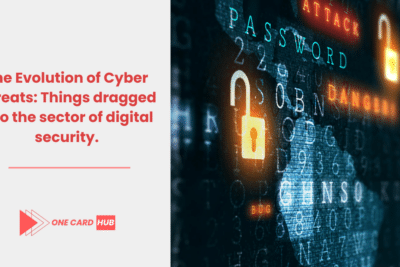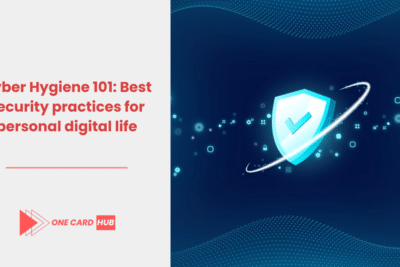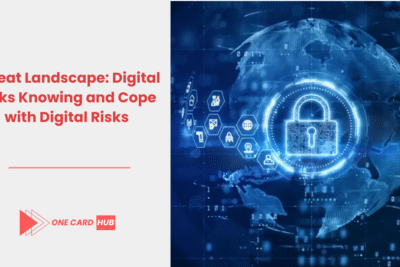
Cyber Resilience: Creation of Stronger defensives and fighting digital threats

In a time of space rapture and ever-increased digital landscape, cyber resilience among individuals and organizations is one of those paramount factors. The notion cyber resilience in fact means being capable to conduct for, react to and overcome than cyber attack. This is more than just cyber security which focuses only on prevention but highly impacts capacity building of individuals to adapt and overcome situations that occur as result of vulnerabilities and attacks. This content of the blog post explores the cyber resilience theory and its implications and gives some helpful tips on the ways to harden our cyber defenses.
Understanding Cyber Resilience
Cyber resilience is the sum total of all the measures taken to ensure cyber risk is managed effectively and thoroughly. It involves firm intestinal cybersecurity procedures alongside business resumption planing to ensure that an organization can continue functioning adequately even in the worst case scenario. The aim is not only to be prepared for possible true-life instances but to ensure that the incidents can be rapidly resolved after each incursion.
Three Core Elements of Cyberspace Resilience
Proactive Threat Intelligence
Keeping yourself informed with the dangers of cyber threats and vulnerabilities is of immense importance. By using intelligence feeds as well as security analytics, the organizations are able to come up with proactive security planning that consists of implementing of prevent actions prior the implementation of the attacks.
Comprehensive Risk Management
Correct cyber resilience is dependent upon the identification and assessment of a wide range of cyber threats towards all the sectors of the organization. These methods encompass carrying out frequent risk assessments and audits and evaluating the practical budget sacrifices they are likely to have on the day to day operations.
Robust Incident Response Planning
The essential requirement is to have this so-called plan of action defense. It is necessary to outline this plan, which shall outline all steps to be taken in the event of an attack, from how to contain the breach, to how to communicate with stakeholders, and restore systems to normal operations.
On-schedule Backups and Data Restorations are Planned to be Incuded.
Guarding the data which is crucial and has the application of recovery procedures to be part of recovery should be the key element of resilience. Such conditions permits an organization to recreate lost or corroded data which in result adjusts a capacity of a cyber incident.
Employee Training and Awareness
The most likeable guardians against any cyber threat are often the staff members themselves, alarmingly. Providing staff with continuous training regarding phishing awareness, proper handling of sensitive data and incident response may strongly reduce the chances of that attacks have been committed successfully.
Clients will be encouraged to cooperate and share their best practices with each other.
The connectivity is power because it destroys differences. Swapping knowledge and perfecting the trade with peers, involvement in community events/seminars, and engagement with cybersecurity alliances are some of the many windows that widens return on individual as well as collective efforts that is securing the information.
Implementation of Strategies for Enhancement of Cyber Resilience
Embrace online-digital-Zero level-Policy.
The company can much improve their protection if they work with a Zero Trust security paradigm, where no user or device is trusted by default, and that is how the breach can be limited to a small portion.
Leverage Advanced Security Technologies
Among various implemented data security systems, like AI-powered breach detection and automatic reaction protocols, the organizations can spot and eliminate threats in a timely manner before they cause any damage.
Ensure Business Continuity
Cybersecurity and business continuity plans have some overlap and an optimal digital resilience can only be achieved when cybersecurity is incorporated into the business continuity plan. Thus, it entails the design of alternate programs for crucial IT infrastructure, essential communications, and vital business processes.
Nurturing a Safety and Security Environment
Awareness of employees on their security functions will contribute to building a culture all employees shall consider their role in cybersecurity. Such a transformation increases the possibility of more alert and proactive practices which allow early detection and considerably stronger overall security posture.
The Through Cyber-Resilience.
Constructing cyber protection is an incessant procedure that demands labour, investment and fatigue. Through complete risk management strategy adoption, an establishment of preincident measures, and a culture of security awareness to depend upon, crime proofing the digital space may become more feasible as individuals and organizations grapple with the moving target that cyber crime has become. In the digital age, cybersecurity means being ready for not if, but when the situation happens, therefore assuring the outcome and performance of the digital operations as
well as the network security and the company's processes.
Recommend Performance Assessment and Correction Cycles, which will be good for Monitoring the process of improvement and learning.
Cyber resilience can't be considered as an unvaried target that becomes stationary once the targets are achieved, because it's actually a process that changes when new threats appear or technology advances. The major ingredient for the lasting effects of this training is to develop a habit of continuous improvement and learning to implement it. The habit of periodically updating and periodically testing cybersecurity practices, incident response plans, and recovery strategies is the main pillar of the whole process that is constantly intensifying the cyber war. Besides their own encounters organizations can also learn from other airlines' experience or what has happened to other institutions within the sector and outside of it.
Invest in Cyber Insurance
Like a cornerstone in a comprehensive risk management strategy, cyber insurance can, thus, be a key player in raising an organization's cyber resistance. Fiscal buffers can do this, acting as a shock absorber to absorb the blow of cyber incidents, including data breach, ransomware and business interruption, and all the ensuing efforts by the organization to recovery. On the other hand, you have to be aware of that cyber insurance is just a stop gap solution and that you must follow cyber security best practices.
Pay special attention to Supplier and Third-party Risk Management given those are the most common entry points for cyber criminals.
In 2019 cyber security era, the cyber resilience of any business, however, is also, necessarily, dependent on the security positions of your suppliers and external contractors. Multiple layered lines of defense need to be deployed based on a firm supplier risk management process, frequent security audits, and mandating the compliance of the third parties with your cybersecurity standard can mitigate breaches arising from third-party sources.
Implement Strong Data Governance
Data governance is a key element which makes the core those of cyber repeatability. Having an idea about the data that exists, its location, the people who can access it will help you to plan a security system well and would also help you to effectively deal with a potential data leak. Hence putting in place the best secure practices on the data classification, control of access, and protection of data will be the backbone of a robust data governance strategy.
Exploit Networks and Municipal Resources, Such As Active Seaside Citizens and Open-Air Spaces to Conduct Your Work.
Most of the government bodies and industry sector provide guides, instruments, and information to empower organization embrace best practices in line with their cyberresilience improvement level. Utilization of these resources can prove to be quite advantageous as they allow businesses to receive reliable information and guidance on latest trends, threats, and regulations. The acts of information exchange in a partnership of a community can at the same time increase situational awareness and support collective defence mechanisms.
Let’s Encrypt the Brave Side of Digital Space that Takes You way Over the Issues of the Real World
However, resilience in the true sense of the word goes beyond computer network defense and cybersecurity; it includes the resilience of people and processes too. It is necessary for businesses to build a sustainable business culture that is ready to evolve, be robust in the face of failures and challenges and bounce back when things go wrong. This envisages employment support for workers, keeping communication transparent during and post crisis and creating calmness among customers and stakeholders.
The Taking Of Cyber Resistance
As more digital steps are taken in our lives and our understanding of digital complexity grows, the significance of cyber-resilience has never been clearer. It is to be the trend that would cover all the aspects, which includes our digital assets protection and at the end the organization viability and image. By putting more resilience in every digital and organizational setup, we can create a sustained future where not only organizations and individuals can rely on protection but also become strong enough to see new opportunities even in adverse situations. A cyber resilience journey requires being alert and adaptable with the understanding that we shall overcome whatever challenges the future will hold with assurance and fortitude.
Further on, Active defense measures have to be taken.
Smart defense is the implementation of program active 'smart' steps that aim to monitor, repel, and cope with threats through means besides war.
eliminate malicious activity through proactive measures before it compromises lives. Overcoming conventional defenses becomes more comprehensive through techniques like honeypot, deception technology and threat hunting. One example is the honeypots, which are the systems deliberately designed to mimic the real organizational assets to serve as the lure of the attackers and later to study their methods to prevent them from gaining access. Making active searches in a computer network of an organization for traces of security flaws that were not identified by the security solutions is called the threat hunting. For instance, an active defense attitude equipped with the capacity to spot and stop threats in an early stage will make gives a company more efficiency in tackling threats.
eliminate malicious activity through proactive measures before it compromises lives. Overcoming conventional defenses becomes more comprehensive through techniques like honeypot, deception technology and threat hunting. One example is the honeypots, which are the systems deliberately designed to mimic the real organizational assets to serve as the lure of the attackers and later to study their methods to prevent them from gaining access. Making active searches in a computer network of an organization for traces of security flaws that were not identified by the security solutions is called the threat hunting. For instance, an active defense attitude equipped with the capacity to spot and stop threats in an early stage will make gives a company more efficiency in tackling threats.
Reinforce Clarification and Differentiation of Incident (Q: Discuss the role of culture and language in the formation of identity. Discuss the importance of cultural traditions, symbols, and rituals in shaping a sense of belonging within different communities.
Solid cyber resilience requires from among other capabilities the capacity to detect and assess such security incidents. It is here implementing the cutting-edge SIEM systems, IDSs and recognizing the patterns with the help of machine learning that give us the chance to detect the cyber attacks in the fabric of cybersecurity. Developing the role of determining and detection skills always gives an opportunity to organizations to act fast to stop an incident that may cause more damage and take necessary rescue actions.
Develop Cyber Resilience Metrics
To efficiently maintain and to enhance the resilience of cyber, organizations must certainly have the KPIs(Key Performance Indicators) and metrics established. These measurements can range from the time it takes to detect and react to attacks, to what consequences such incidents have on the process, down to the operation level and the recovery procedures implementation quality. It is very important to calculate cyber resilience because by understanding this measure, organizations can see where they can improve, they spend more resources on the right purposes, and they confirm the value of the cybersecurity investments to the stakeholders.
Focus primorily on User Education and bringing in the Change of Behavior.
Technologies though have great impact on information security but the human factor remains a high priority for this. Communication about digital world and creating safe internet programs frequently are reliable ways to get users to change risky actions and to continue good cybersecurity practices. Continuous training, practices, and awareness campaigns have a prose in building a culture which is security- conscious, and to do it make fraudulent social engineering and insider threat less probable.
Teamwork to a Comprehensive Cybersecurity.
Cyber resilience, however, is not about the policy of one organization; it develops and complies with many partners across the sectors and borders. Such involvement with different business entities, governmental bodies, and security systems cooperatively can strengthen the cyberdefense power. Threat intelligence information sharing, security best practices and resources pooling is something inter-operable cyber defense should encompass. This unifies the parties and better defends cyber assets, because cyber criminals are getting smarter and experts from different sectors are not always able to cope with their diverse abilities.
Incorporate Resilience as a Key Quality of an Effective Team Leader and Decision-Maker
Management of an organization is perhaps the most vital part of being able to drive resilience. This demands from the leaders to put cybersecurity in the first place, to make sure that risks are taken care of at the strategy-level decisions and to support security and preparedness management by building up a culture of this kind. Another role of leaders includes creating a sustainable budget to achieve the desired results of the adopted resilience efforts and aligning policies and procedures of the organization with the enterprise risks appetite and business objectives.
A holistic approach to cyber resilience urges organizational leaders to turn their attention to this rising threat and proactively implement measures to guard their systems and …
Cyber, resilience construction in an era of digital universe with high and constant risk of cyberattacks requires a technology-driven, people-oriented, process-centered, and collaboration-based strategy. It calls for businesses to bolster their resistance by staying wary of the emergence of risks, shielding assets, responding to threats swiftly and effectively and recovery after incidents immediately and appropriately. Through integrating resilience in the essence of how they operate, companies can freely be able to navigate the digital environment as they are well prepared for the vulnerabilities in cyber space, not only with ninja survival but in conquering new territory. The road to cyber resilience is long, and there are always new things to learn and unexpected turns to take, but with smart foresight, a future of unfailing and resilient use of digital technologies finds its way.FAQ: Next is how to cyber resilient and taking steps to protect from cyber threat.
1. So what is being cyber-resilient?
Cyber resilience refers to an organization’s competence to manage cyber events and continue its intended business without any technical, physical, or organizational disruptions. It represents the capacities that include resilience to bulling, reaction to cyber incidents and disasters, restoration after cyber threats or breaches, and adaptation to cyber threats.
2. What can it mean to be cyber resilient?
The sphere of cybersecurity is just that, preventing cyber threats and securing digital assets. Cyber resilience, on the other hand, is the more broad-based approach that helps you carry on with the work during the cyber-attack when you can, minimizing risks and recovering from the cyber incidents quickly.
3. What meaning does vulnerability intelligence that covers both the proactive and reactive side have?
Cyber threat intelligence situated before the occurrences helps the organizations to anticipate all possible threats and be ready in advance to prevent cyber incidents. It gives an insight to critical weak spots, detecting new dangers and implementing preventive measures for the previously seen issues beforehand.
4. Shall we trace employees as ones who carry cyber resilience in the workplace?
Employees are mostly the ones who have to act quickly and respond whenever a threat comes. Protocol and awareness training ought to be repeated to give staff the knowledge of how to prevent cyber-attacks through recognizing phishing attempts and applying the best cybersecurity methods.
5. Suffering from result of hacking and cyber attacks, organizations should know about measure of cyber resilience.
The cyber resilience of an organization can be measured through key performance indicators (KPIs) that include the time taken to detect and contain attacks or disruptions, the impact of breaches on operations and scenarios of when restoration processes are executed efficiently.
6. What is an active defense strategy in the case of cybersecurity?
A highly effective defense involves advance steps of discovering, breaking, and canceling emerging cyber threats before they can damage structures, services, or private data. Various approaches were addressed here, such as honeypots, deception technology, and threat hunting aimed at identifying and reducing threats more effectively.
7. The question is are cooperation or cyber resilience inter-connected?
The pooling of resources and skills among the government agencies on all tiers and across borders improves the collective defense capabilities. Through joint efforts of police agencies and criminologists, a better understanding of the distribution of crimes, risk factors and criminal motives in a given society can emerge for a more efficient allocation of resources and strategies against criminal activity.
8. Why do we pay close attention to leadership in cyber resilience?
Leadership should be committed to the establishment of system cybersecurity that reduces or minimizes risks, and manages the crisis. This calls for the development of a culture of secure work environment. Leaders need to facilitate this by creating a stable, funded pipelined, and clearly defined with the organizational goals.
A holistic approach to cyber resilience urges organizational leaders to turn their attention to this rising threat and proactively implement measures to guard their systems and …
Cyber, resilience construction in an era of digital universe with high and constant risk of cyberattacks requires a technology-driven, people-oriented, process-centered, and collaboration-based strategy. It calls for businesses to bolster their resistance by staying wary of the emergence of risks, shielding assets, responding to threats swiftly and effectively and recovery after incidents immediately and appropriately. Through integrating resilience in the essence of how they operate, companies can freely be able to navigate the digital environment as they are well prepared for the vulnerabilities in cyber space, not only with ninja survival but in conquering new territory. The road to cyber resilience is long, and there are always new things to learn and unexpected turns to take, but with smart foresight, a future of unfailing and resilient use of digital technologies finds its way.FAQ: Next is how to cyber resilient and taking steps to protect from cyber threat.
1. So what is being cyber-resilient?
Cyber resilience refers to an organization’s competence to manage cyber events and continue its intended business without any technical, physical, or organizational disruptions. It represents the capacities that include resilience to bulling, reaction to cyber incidents and disasters, restoration after cyber threats or breaches, and adaptation to cyber threats.
2. What can it mean to be cyber resilient?
The sphere of cybersecurity is just that, preventing cyber threats and securing digital assets. Cyber resilience, on the other hand, is the more broad-based approach that helps you carry on with the work during the cyber-attack when you can, minimizing risks and recovering from the cyber incidents quickly.
3. What meaning does vulnerability intelligence that covers both the proactive and reactive side have?
Cyber threat intelligence situated before the occurrences helps the organizations to anticipate all possible threats and be ready in advance to prevent cyber incidents. It gives an insight to critical weak spots, detecting new dangers and implementing preventive measures for the previously seen issues beforehand.
4. Shall we trace employees as ones who carry cyber resilience in the workplace?
Employees are mostly the ones who have to act quickly and respond whenever a threat comes. Protocol and awareness training ought to be repeated to give staff the knowledge of how to prevent cyber-attacks through recognizing phishing attempts and applying the best cybersecurity methods.
5. Suffering from result of hacking and cyber attacks, organizations should know about measure of cyber resilience.
The cyber resilience of an organization can be measured through key performance indicators (KPIs) that include the time taken to detect and contain attacks or disruptions, the impact of breaches on operations and scenarios of when restoration processes are executed efficiently.
6. What is an active defense strategy in the case of cybersecurity?
A highly effective defense involves advance steps of discovering, breaking, and canceling emerging cyber threats before they can damage structures, services, or private data. Various approaches were addressed here, such as honeypots, deception technology, and threat hunting aimed at identifying and reducing threats more effectively.
7. The question is are cooperation or cyber resilience inter-connected?
The pooling of resources and skills among the government agencies on all tiers and across borders improves the collective defense capabilities. Through joint efforts of police agencies and criminologists, a better understanding of the distribution of crimes, risk factors and criminal motives in a given society can emerge for a more efficient allocation of resources and strategies against criminal activity.
8. Why do we pay close attention to leadership in cyber resilience?
Leadership should be committed to the establishment of system cybersecurity that reduces or minimizes risks, and manages the crisis. This calls for the development of a culture of secure work environment. Leaders need to facilitate this by creating a stable, funded pipelined, and clearly defined with the organizational goals.






Related posts